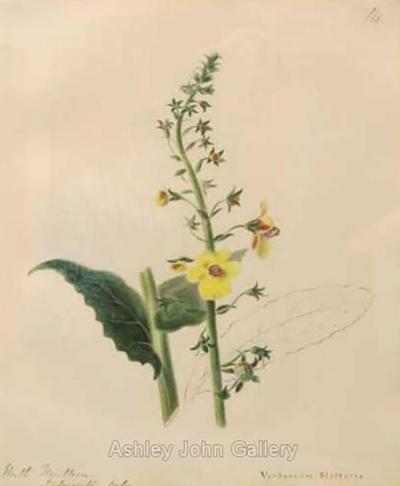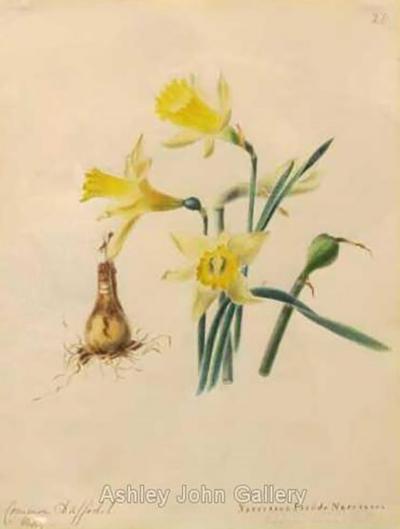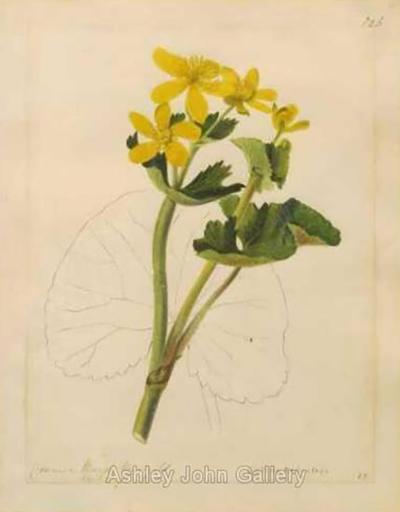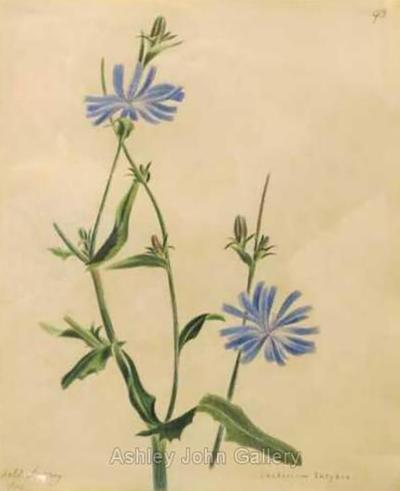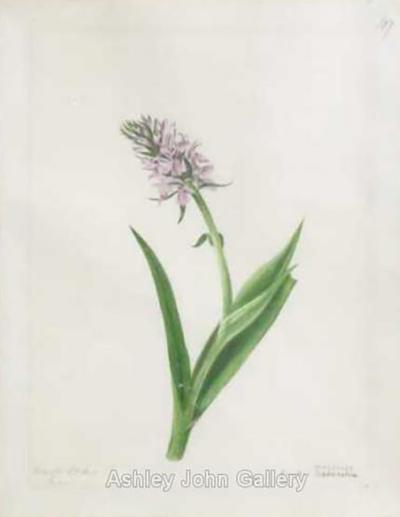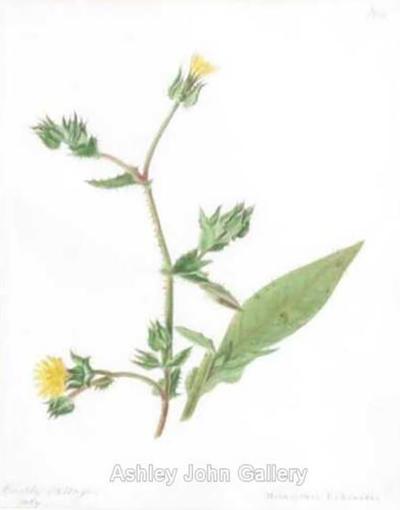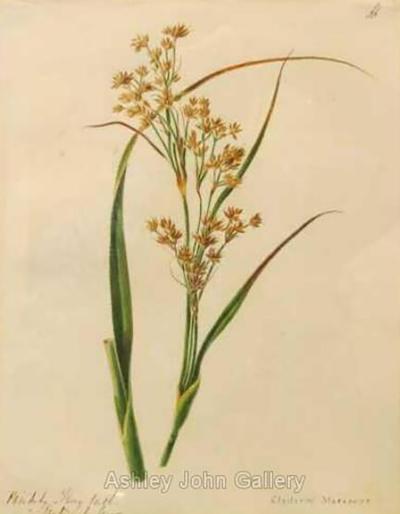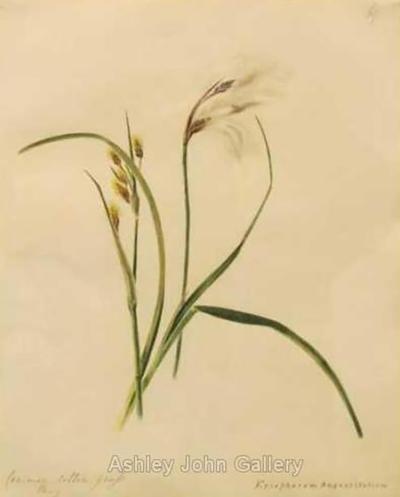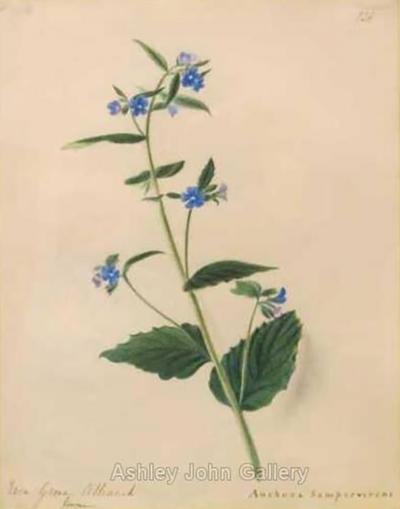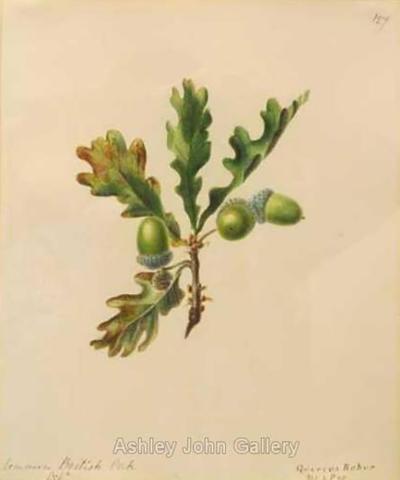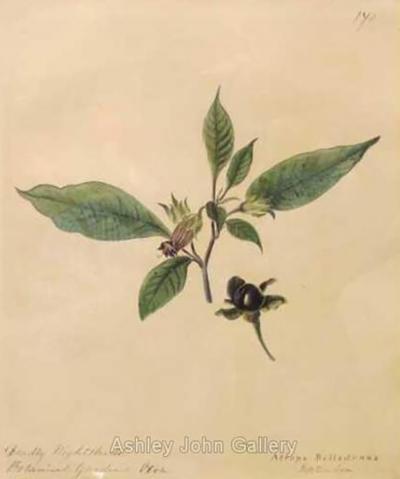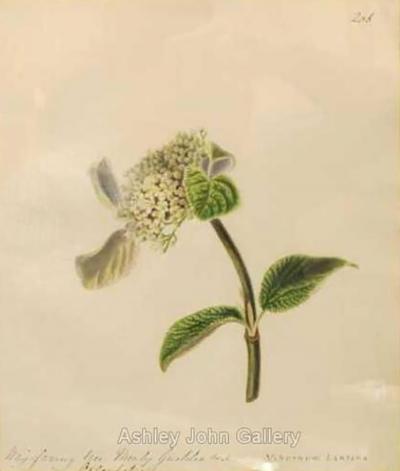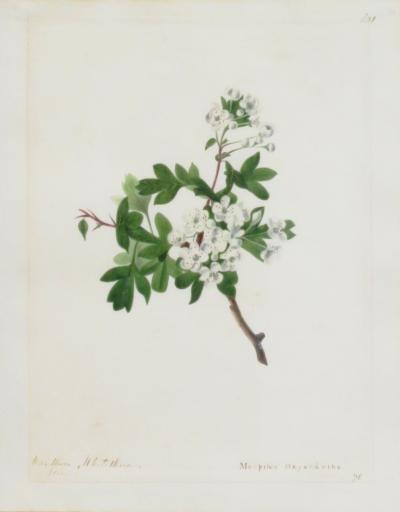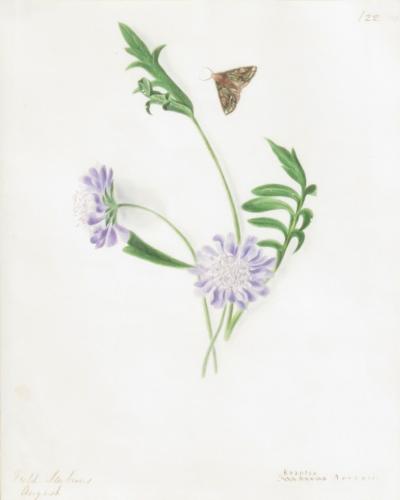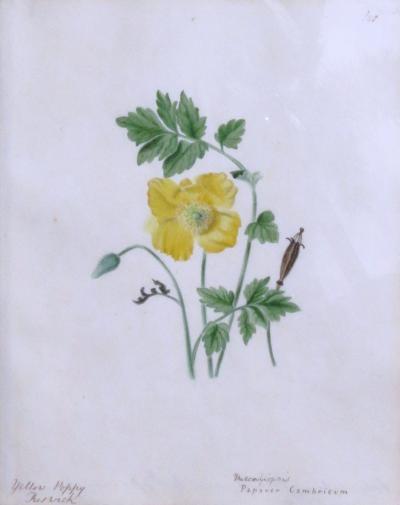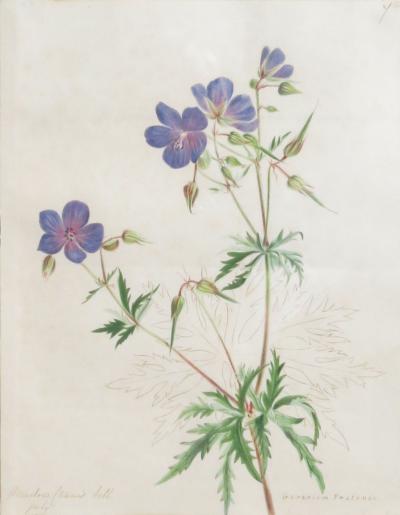Emily Stackhouse
American, 1811 - 1870
Emily Stackhouse (July 15, 1811 – April 1, 1870) was a distinguished British botanical artist and plant collector known for her meticulous watercolors and extensive plant studies across the British Isles. Her artwork was widely reproduced in popular publications by the Society for Promoting Christian Knowledge, notably showcasing her ability to document and classify various plants, including many mosses, prior to their formal recognition in Cornwall.
Born in Modbury, Devon, into a family steeped in naturalist traditions, Emily was the daughter of Rev. William Stackhouse III. She was connected to several notable botanists, including her great-uncle, John Stackhouse. The Stackhouse family moved to Trehane, a large estate, which provided her with rich opportunities for exploration and study.
Throughout her career, Emily created over 620 detailed watercolors, each inscribed with the English and Latin names of the plants, along with their locations and dates of collection. Her precision and vivid color rendered her works significant contributions to botanical art. She received recognition at the Royal Cornwall Polytechnic Society's annual exhibition, winning bronze medals for her contributions in 1846 and 1853.
In the 1840s, her work caught the attention of botanist Charles Alexander Johns, who enlisted her to illustrate a series of natural history books. Among these were Forest Trees of Britain (1847) and Flowers of the Field (1851), the latter achieving immense popularity and going through over 50 editions. Despite being largely uncredited, her influence on amateur botany was profound, and her illustrations appeared in numerous publications well into the 20th century.
As her eyesight declined in the late 1850s, Stackhouse shifted her focus to plant collecting, contributing specimens to the British Museum of Natural History and collaborating with fellow botanists. She classified nearly every British moss and published her findings in various journals.
Stackhouse passed away in Truro, Cornwall, in 1870, leaving behind a legacy of detailed botanical illustrations that continue to inspire and educate. Her commitment to natural history and her artistic talent have solidified her place in the history of botanical art.
Born in Modbury, Devon, into a family steeped in naturalist traditions, Emily was the daughter of Rev. William Stackhouse III. She was connected to several notable botanists, including her great-uncle, John Stackhouse. The Stackhouse family moved to Trehane, a large estate, which provided her with rich opportunities for exploration and study.
Throughout her career, Emily created over 620 detailed watercolors, each inscribed with the English and Latin names of the plants, along with their locations and dates of collection. Her precision and vivid color rendered her works significant contributions to botanical art. She received recognition at the Royal Cornwall Polytechnic Society's annual exhibition, winning bronze medals for her contributions in 1846 and 1853.
In the 1840s, her work caught the attention of botanist Charles Alexander Johns, who enlisted her to illustrate a series of natural history books. Among these were Forest Trees of Britain (1847) and Flowers of the Field (1851), the latter achieving immense popularity and going through over 50 editions. Despite being largely uncredited, her influence on amateur botany was profound, and her illustrations appeared in numerous publications well into the 20th century.
As her eyesight declined in the late 1850s, Stackhouse shifted her focus to plant collecting, contributing specimens to the British Museum of Natural History and collaborating with fellow botanists. She classified nearly every British moss and published her findings in various journals.
Stackhouse passed away in Truro, Cornwall, in 1870, leaving behind a legacy of detailed botanical illustrations that continue to inspire and educate. Her commitment to natural history and her artistic talent have solidified her place in the history of botanical art.
